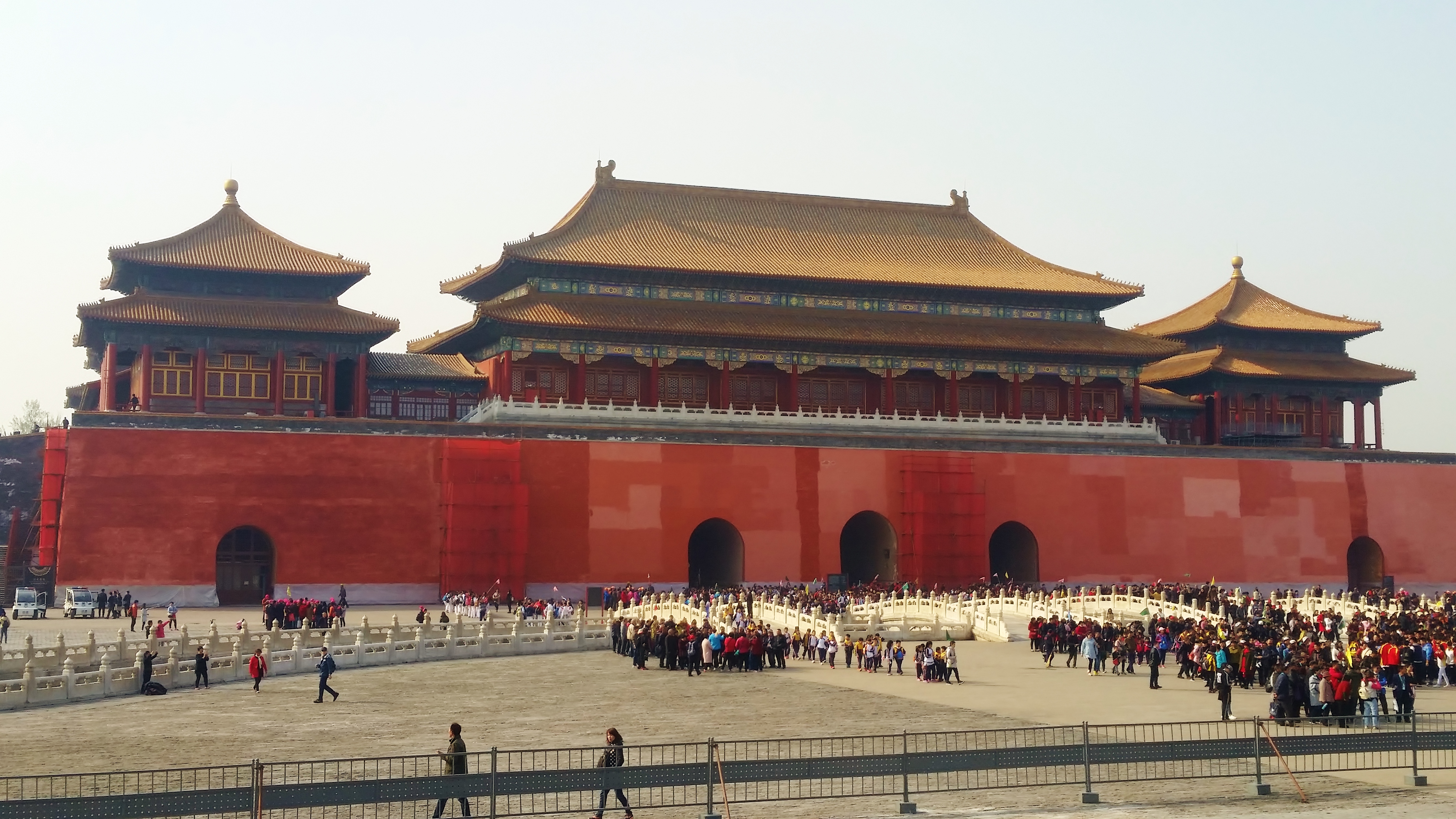Meridian Gate on:
[Wikipedia]
[Google]
[Amazon]
 The Meridian Gate or Wumen (;
The Meridian Gate or Wumen (;
 The Meridian Gate or Wumen (;
The Meridian Gate or Wumen (; Manchu
The Manchus (; ) are a Tungusic peoples, Tungusic East Asian people, East Asian ethnic group native to Manchuria in Northeast Asia. They are an officially recognized Ethnic minorities in China, ethnic minority in China and the people from wh ...
: ; Möllendorff: ''julergi dulimbai duka'') is the southern and largest gate of the Forbidden City
The Forbidden City () is the Chinese Empire, imperial Chinese palace, palace complex in the center of the Imperial City, Beijing, Imperial City in Beijing, China. It was the residence of 24 Ming dynasty, Ming and Qing dynasty, Qing dynasty L ...
in Beijing
Beijing, Chinese postal romanization, previously romanized as Peking, is the capital city of China. With more than 22 million residents, it is the world's List of national capitals by population, most populous national capital city as well as ...
, China
China, officially the People's Republic of China (PRC), is a country in East Asia. With population of China, a population exceeding 1.4 billion, it is the list of countries by population (United Nations), second-most populous country after ...
. Unlike the other gates of the Forbidden City, the Meridian Gate has two protruding arms on either side, derived from ancient que towers traditionally used to decorate the main entrances of palaces, temples and tombs. The gate has five arches. The three central arches are close together in the main, central section; the two flanking arches are further apart from the three central arches, and are located between the central section and the protruding arms. The centre arch was formerly reserved for the Emperor
The word ''emperor'' (from , via ) can mean the male ruler of an empire. ''Empress'', the female equivalent, may indicate an emperor's wife (empress consort), mother/grandmother (empress dowager/grand empress dowager), or a woman who rules ...
alone; the exceptions were the Empress, who could enter it once on the day of her wedding, and the top three scholars of the triennial civil service examinations, who left the exams through the central arch. All other officials and servants had to use the four side arches.
A series of buildings form the superstructure of the gate. The central one is a pavilion of nine bays wide, with double eaves. On each of the protruding side, a 13 bays-long building with a single eave, connects the two pyramidal-roofed pavilions that represented the que towers.
Its superstructure is also called the "Five Phoenix Turrets" because it is composed of five buildings. Imperial proclamations and almanacs were issued from the gate house. After successful campaigns, the Emperor received prisoners of war here, sometimes followed by mass decapitations.
An urban myth claims that senior officers were executed here in Imperial China
The history of China spans several millennia across a wide geographical area. Each region now considered part of the Chinese world has experienced periods of unity, fracture, prosperity, and strife. Chinese civilization first emerged in the Y ...
. In reality, only corporal punishment was carried out.
Behind the viewer is Upright Gate, the principal entrance to the imperial palace grounds.
When proceeding northward through the palace grounds, the next major gate encountered is the Gate of Supreme Harmony.
See also
* Ming Palace, in Nanjing, which had a southern gate also called "Meridian Gate". * Meridian Gate (Huế)References
{{Palace Museum, state=expanded Gates of Beijing Forbidden City Ming dynasty architecture Qing dynasty architecture